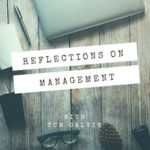121: Rhetoric vs. Reality — Mark Zbaracki
This month we explore a renowned multiple-case study commonly assigned as foundational readings in organization studies programs. Mark Zbaracki’s “The rhetoric and reality of Total Quality Management” chronicled the development and introduction of Total Quality Management (TQM) into the corporate environment, only to find that in many cases its implementation did not align with the promises made by leaders about process improvements nor did firms fully exercise all the practices and activities that TQM required. The question that Zbaracki posed was more than to what extent did this rhetoric-reality unfold, but why?Read More
Podcast: Play in new window | Download











